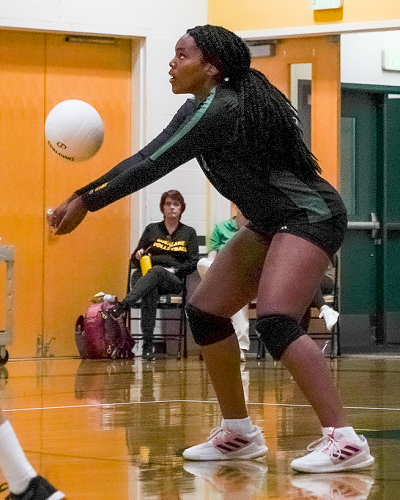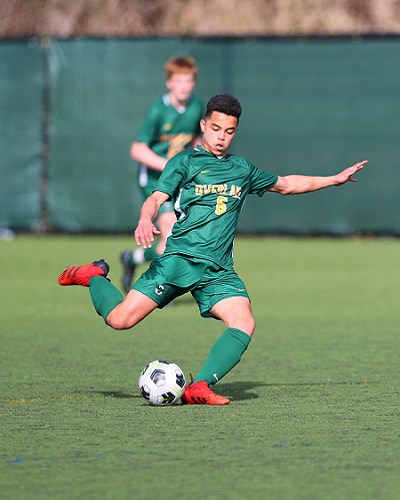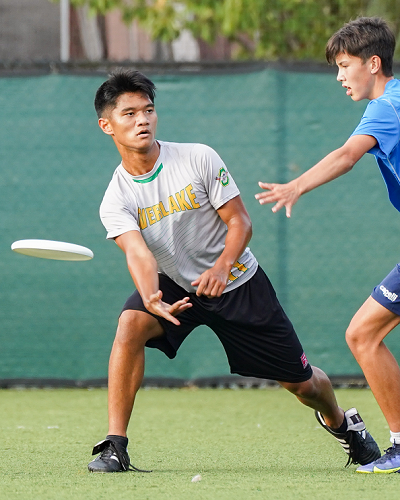Athletic Training
Certified Athletic Trainer (AT) Kim Stevens is in charge of all medical clearance and care of our student athletes. The AT is available during the school day, after school, and is on the sideline for games at Overlake to provide the best possible healthcare to ensure our student athletes can participate in a safe manner.
Services Overview
- Injury Evaluation
- CPR/AED training for all faculty/staff/coaches
- Cardiac Screening
- Therapeutic Exercise & Rehabilitation
- Game Ready & NormaTec Compression Therapy
- Instrument-Assisted Soft Tissue Mobilization
- Concussion Evaluation and Management
- ImPACT & Sway Balance Concussion Baseline Testing
FAQ
Athletes should get to know their AT when they are healthy and have no complaints of injury/illness—you never know when you might need their help.
Injuries for any Overlake School Student, whether occurring in school or not, can be assessed and treated by the Overlake School AT in conjunction with your physician, physical therapist, etc.
Any and all head injuries must be reported to the Overlake School AT. The AT works in conjunction with Learning Support Services and school administration to facilitate a return to academics following a head injury. All returns to Overlake Athletics following a head injury must go through the AT if participating in an Overlake team sport.
Overlake's AT is Kim Stevens. Kim holds B.S. degrees in both Athletic Training and Exercise Science, from Linfield College, and M.A. in Post-Professional Athletic Training from the University of North Carolina at Chapel Hill. She conducted undergraduate research on the plank exercise and completed her Master's thesis on training load effects on shoulder mechanics in volleyball players. Additionally, she is interested in injury prevention, rehabilitation, and emergency response and planning.
ATs are highly qualified, multi-skilled health care professionals who collaborate with physicians to provide preventative services, emergency care, clinical diagnosis, therapeutic intervention and rehabilitation of injuries and medical conditions. ATs work in collaboration with a physician as prescribed by state licensure statutes. ATs improve functional outcomes and specialize in patient education to prevent injury and re-injury. Preventative care provided by an AT has a positive return on investment for employers. ATs are able to reduce injury and shorten rehabilitation time for their patients, which translates to lower absenteeism from work or school and reduced health care costs for patients.
The scope of practice of a Certified Athletic Trainer falls within the Five Domains of Athletic Training.
- Injury/illness prevention and wellness protection
- Clinical evaluation and diagnosis
- Immediate and emergency care
- Treatment and rehabilitation
- Organizational and professional health and wellbeing
Download the Guide to Athletic Training Services for more information.
To become a Certified Athletic Trainer one must graduate from a bachelors or entry-level masters degree program accredited by the Commission on Accreditation of Athletic Training Education (CAATE). The candidate must then pass the national certification examination conducted by the Board of Certification (BOC). 49/50 states also require that ATs be licensed or registered with the state board of health.
Athletic Training Programs
ImPACT & Sway
Overlake Athletic Training administers ImPACT baseline testing for US students participating in the following sports:
- soccer
- volleyball
- basketball
- baseball
- ultimate frisbee
- lacrosse
We also administer Sway balance testing for all teams except golf.
Baseline testing must be completed every two years and must be completed before the start of the season. To schedule a baseline test, contact Kim Stevens.
Cardiac Screening Program
Overlake Athletics would like to make families aware of the risks of Sudden Cardiac Arrest (SCA) in youth athletics. Overlake is partnered with the UW Medicine Center for Sports Cardiology and Dr. Jon Drezner to complete baseline Electrocardiogram (ECG) cardiac testing for Overlake students, offering optional screenings 3 times per year (prior to each season).
An ECG is a simple test that observes heart rhythm and can screen for potentially fatal abnormalities, which could lead to SCA. The $30 screening cost is billed to student accounts. Financial aid is available based on need.
Though athletes have a greater risk of SCA, any students 12 or older may get screened. Screenings are optional. Complete this heart health survey to register your student. More Cardiac Screening Program information.
Head Injury Return Protocols
Return to Learn (RTL) Protocol
As part of the RTL protocol, student should meet daily with learning specialist and AT to assess symptoms and progress.
- Step 1: Daily activities at home that do not increase symptoms
- Start with 10-15 minutes of reading, screens, focus and work up from there if tolerated.
- Step 2: School activities
- Homework, reading, or other cognitive activity inside the classroom.
- Can utilize alternative forms of notes (print vs. screen), audio-books, summarizing information
- May not progress past step 2 of RTL process until return to classroom activities without increase in symptoms has been met
- Step 3: Return to school part time
- Gradual reintroduction of classroom participation
- Can utilize alternative forms of notes, extended testing time, quiet spaces and other accommodations
- Step 4: Return to full participation
- Gradually increase school activities and decrease accommodations as student returns to symptom-free academic activity.
Return to Play (RTP) Protocol
This exertional protocol allows a gradual increase in volume and intensity during the return to play process. The athlete is monitored for any concussion-like signs/symptoms during and after each exertional activity, the following steps are not to be performed all on the same day.
Please note: The Certified Athletic Trainer will oversee the RTP process and make decisions regarding progression in the protocol and final clearance. Final clearance for RTP for Overlake student athletes must be given by the AT.
- Exertion Step 1
- Return to normal activities of daily living
- Exertion Step 2
- Light cardiovascular exercise - stationary bike 20 minutes
- Completion of return to learn progression; full classroom participation
- Exertion Step 3
- Non-contact, sports-specific drills for approximately 15 minutes
- Interval bike ride, 20 to 30 minutes
- Bodyweight circuit
- Exertion Step 4
- Jogging, 30 minutes
- Plyometric exercises - jumping, cutting etc.
- Increased non-contact sport-specific drills
- Exertion Step 5
- Limited, controlled return to non-contact practice and monitoring for symptoms
- Exertion Step 6
- Full sport participation in a practice
Athletics Resources
Forms
External Links
Contact
Samantha Hillyer ('01)
Director of Health & Wellness
shillyer@overlake.org
425-602-7077



